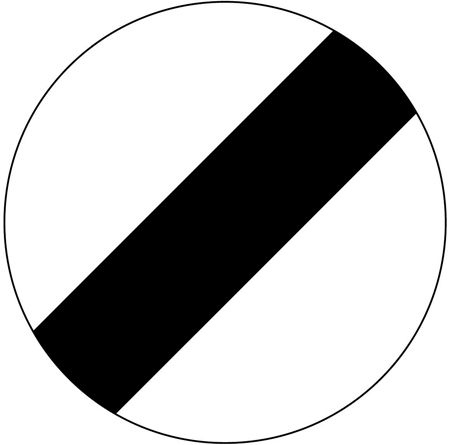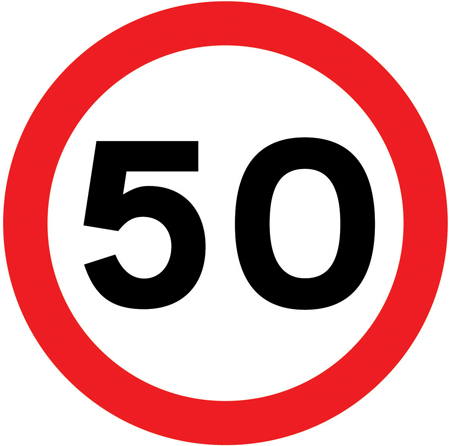A dual carriageway is a road which has a central reservation to separate the carriageways.

They are usually used to link major roads or areas together, and where there is high traffic flow – where two lanes would benefit the traffic to keep traffic moving. Despite the name, some ‘dual carriageways’ have only one lane in each direction, or maybe three lanes: it is the separation between opposite directions that makes it a dual carriageway.
How do you join a dual carriageway?
If there is no slip road, emerge as you would like a left turn at a junction. Ensure that you emerge into the left hand lane of the dual carriageway, and you wait for a gap big enough to build up your speed.
If there is a slip road, indicate your intention to join, and use the slip road to adjust your speed to that of the traffic on the dual carriageway. Look for a gap in the traffic, and then merge into the left hand lane. Consider a quick sideways glance to check that there are no vehicles next to you, but also use your mirrors effectively to see the position of the vehicles on the main dual carriageway.
Once you have joined, remember to cancel your indicators, and continue to build up your speed to match the speed of other vehicles.
If other vehicles are trying to join the dual carriageway whilst you are already on it, follow these tips:
- Don’t try to race them whilst they’re on the slip road
- Look well ahead, if there are several vehicles trying to join, be prepared to adjust your speed
- Show consideration for traffic joining, and if it’s safe to do so, change lanes to give the joining traffic space
- Take extra care if the dual carriageway curves, as vehicles on the slip road may have difficulty seeing vehicles on the dual carriageway
Whilst on the dual carriageway
Continually reassess the movement of other vehicles, and check your mirrors so you know what’s happening around you. Remember that at high speeds, situations can change rapidly, and effective observations can help you prepare for any sudden developments.
Tips for good, defensive driving on a dual carriageway:
- Anticipate problems, take avoiding action before they develop
- Slow down in good time
- Keep your distance from the vehicle ahead
- Take particular care when overtaking lorries, as some have poor visibility to their right
- Avoid braking suddenly. Leave plenty of space between yourself and the vehicle ahead
- Always check in your mirrors before braking so you’re aware of who’s around you
It is important to leave at least a 2 second gap between you and the vehicle in front. This means if the vehicle ahead suddenly brakes or something happens, you have time to react. In the rain, or when the roads are wet, we should increase this to a 4 second gap. When it’s snowing or icy, we should times this by 10, and leave a 20 second gap.
Lane discipline
Where we have two lanes, the correct position for normal driving is in the left hand lane. The right hand lane is for overtaking. Once you’ve overtaken, you should return to the left hand lane when safe to do so. Large goods vehicles (such as lorries etc) are permitted to use both lanes, and are to follow the same rules.
Where we have three lanes on a dual carriageway, the same rules apply – keep to the left hand lane unless overtaking. However, don’t stay in lane number 2 or 3 for longer than necessary, or if you’re delaying traffic behind you. Drivers of large goods vehicles (lorries etc) or those towing trailers, are not permitted to use the far right hand lane of a 3 or more lane dual carriageway, unless the other lanes are closed.
Overtaking safely

You shouldn’t change lanes unnecessarily. The Driving Essential Skills book (our ‘bible’ of driving safely and effectively) says that we should use the Mirror-Signal-Position-Speed-Look routine. At higher speeds you would need to start this routine earlier.
Mirrors – check your middle and right mirrors to check the vehicles around you – look at their position and speed. Consider a glance to your right to check there are no vehicles directly next to you (which you would not be able to see in your mirrors). Remember that vehicles may be travelling faster than you in the right hand lane – take this into account when overtaking and changing lanes
Signal – Signal in good time. The sooner you indicate, the sooner other drivers are warned of your intentions, and they’ll have time prepare and plan
Position – You should be able to move out into the overtaking lane smoothly. Avoid making sudden movements.
Speed – Make sure you’re going fast enough or can accelerate quickly enough to overtake without blocking any vehicles coming up behind you.
Look – Look ahead and use your mirrors to check whether there’s anything preventing you from overtaking safely (for example, a lane closure up ahead, or traffic approaching much faster from behind)
Be particularly aware of motorcyclists who may be harder to see. Also in heavy traffic, be aware of motorcyclists filtering through lanes of slower moving traffic.
When moving back to the left, use your mirrors to ensure you have fully passed the vehicle that you’re overtaking. Signal if necessary, before moving back to the left as soon as it’s safe to do so.
You should never overtake on the left, unless the traffic is moving in queues and the queue to your right is moving more slowly than the queue you’re in.
How do you leave a dual carriageway?
Know which exit you want to take by looking at road signs or listening to your sat nav. Position yourself in the left hand lane in good time. Make sure you plan well ahead, and aren’t stuck in a far right hand lane when you should be coming off the dual carriageway. Look for the countdown markers that tell you how far it is to the exit – 300, 200, 100 yard markers.

Try to avoid slowing down on the dual carriageway before you exit, as you could hold up vehicles behind you. Try to wait until you are on the exiting slip road before braking. If the slip road is really short, you may need to start braking just before you exit to bring your speed down.
If you miss your exit, carry on to the next one.
Remember that you will be used to driving at high speeds whilst on a dual carriageway. When you exit a dual carriageway, your judgement may be affected. Going 40mph may feel like 20mph. Glance at your speedometer to check your actual speed.
Breakdowns on dual carriageways
Some, not all, dual carriageways have a hard shoulder, and sometimes they also have emergency phones at regular intervals. Most dual carriageways however, do not have a hard shoulder or an emergency phone. If you breakdown, you should try and get your car off the main dual carriageway if possible – whether this is driving to the next exit, pulling onto a grass verge, or using a lay by or hard shoulder.

Use laybys where possible, and use an SOS phone if available to call for help
You should also
- Use hazard warning lights
- Place a warning triangle at least 45 metres/147ft from your vehicle if safe to do so (not on motorways).
- Move your passengers to a safe position, preferably behind a safety barrier behind your vehicle. Ensure passengers are well away from other vehicles driving on the dual carriageway. Do not leave passengers in the vehicle – if your vehicle gets hit whilst stationary, this could do alot of damage with your passengers inside.
- Telephone for assistance (using either your mobile phone, or the SOS phones if available. Using the SOS phones will allow the operator to find your exact location)
- Keep animals in the vehicle (in case they run across the dual carriageway, causing more hazards or even a collision)
Speed limits on dual carriageways

The national speed limit for a dual carriageway is 70mph. If you are a large goods vehicle (lorries, coaches etc) or towing a trailer, you must abide by the reduced speed limit of 60mph for safety reasons. The national speed limit sign is shown here. The lower limit of 60mph also applies to vans.

If any other speed limit applies, such as reduced speed limits for roadworks, for safety reasons on potentially dangerous sections or accident black spots on dual carriageways, they will be in red circles, also pictured. You must abide by the reduced speed limit if shown. You may go back to 70mph once you pass another national speed limit sign.
Is it always safe to go the speed limit though? Good question…
We need to take various things into account when choosing our speed. This could include thinking about traffic conditions, road conditions and quality, your vehicle condition, weather conditions, your health (any medications or tiredness that may affect your driving) etc. Speed limits are limits – not targets. We will be covering this in another blog soon, look out for this!
Reflective studs
Reflective studs are the cats eyes you get in the road. They help you judge where you are on the road, especially at night.
On the far left hand side, you will find red studs. This indicates the edge of the carriageway.
At entrances/exits/slip roads/laybys, you will find green studs.
In between lanes, you will find white studs.
On the far right hand side, between the dual carriageway and the central reservation, you will find amber studs.

We hope this has been helpful!
Next week, we’re looking at… the emergency stop!
